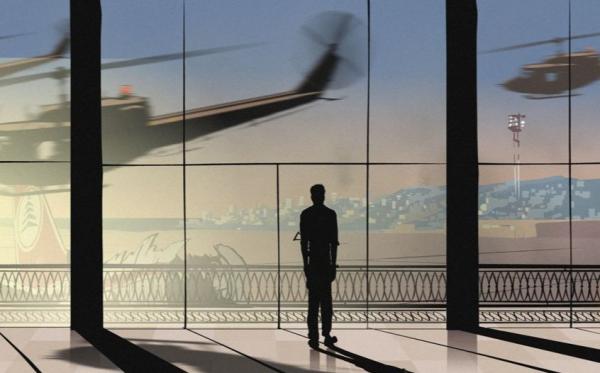 |
Tout commence par une scène d’effroi. Une meute de chiens diaboliques qui suivent un parcours effréné vers leur but : un homme, terrifié, qui les guette depuis la relative sécurité de sa fenêtre. Puis, deux hommes dans un bar. Il fait nuit. L'un raconte son cauchemar à l'autre, qui essaie de comprendre et finit par déclarer ne pas avoir de souvenirs du temps passé à la guerre pendant les années 1980, dans l'IDF. Ce soir-là, l'homme qui dit avoir tout oublié fait un rêve obscur, situé lors des massacres dans les camps palestiniens de Sabra et Chatila. Ce rêve marque le début d’une recherche du temps perdu, et des gens qui l'ont passé avec lui. La recherche de la vérité sur sa place dans ces événements tragiques, une vérité refoulée pendant ces vingt dernières années. Et c'est une recherche à l'aveuglette qui nous emmène bien plus loin qu'on l’aurait imaginé...
An opening scene rife with terror: a pack of slavering, diabolic dogs race headlong through the city streets, heedless of what may lie in their path. They come to a halt at the foot of a building and bay upwards, at the window from which their prey is watching in silent horror, blinking. Then: two men in a bar. It's late. The one is recounting his recurring nightmare to the other, who tries to comprehend, and finishes by declaring he has no memory of the time spent at war during the early 1980s in the IDF. That night, the man who claimed to have forgotten it all has a dream. The dream is situated during the massacres at the Palestinian refugee camps of Sabra and Shatila. It is strange and sad and it makes no clear sense. And it marks the beginning of a quest to discover the truth of his place in the tragic events – a truth he's successfully hidden from himself for twenty years, a quest that will lead us much further than we may have imagined… |
Valse avec Bachir, un film d'animation d'Ari Folman
- Catégorie : Cinéma

